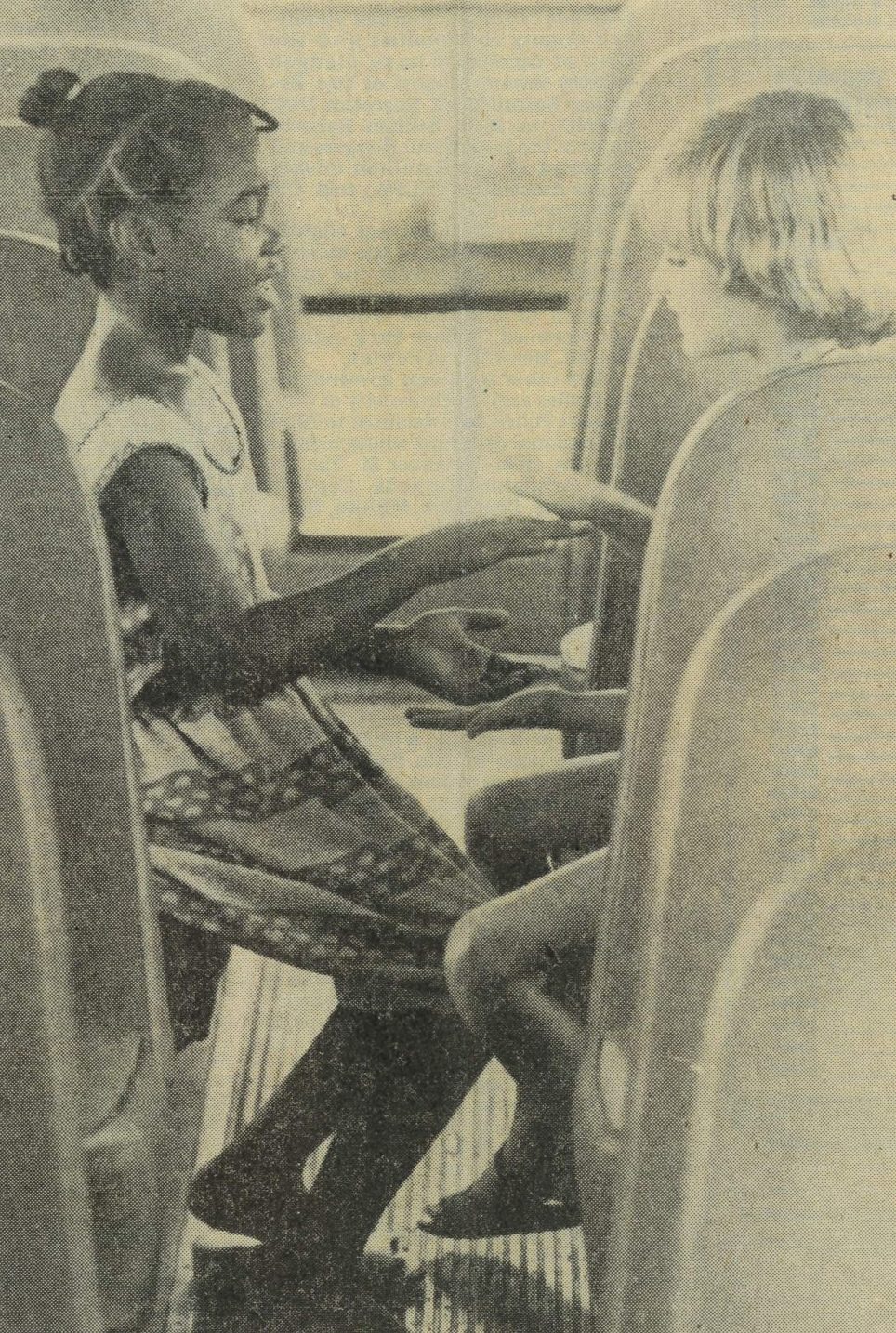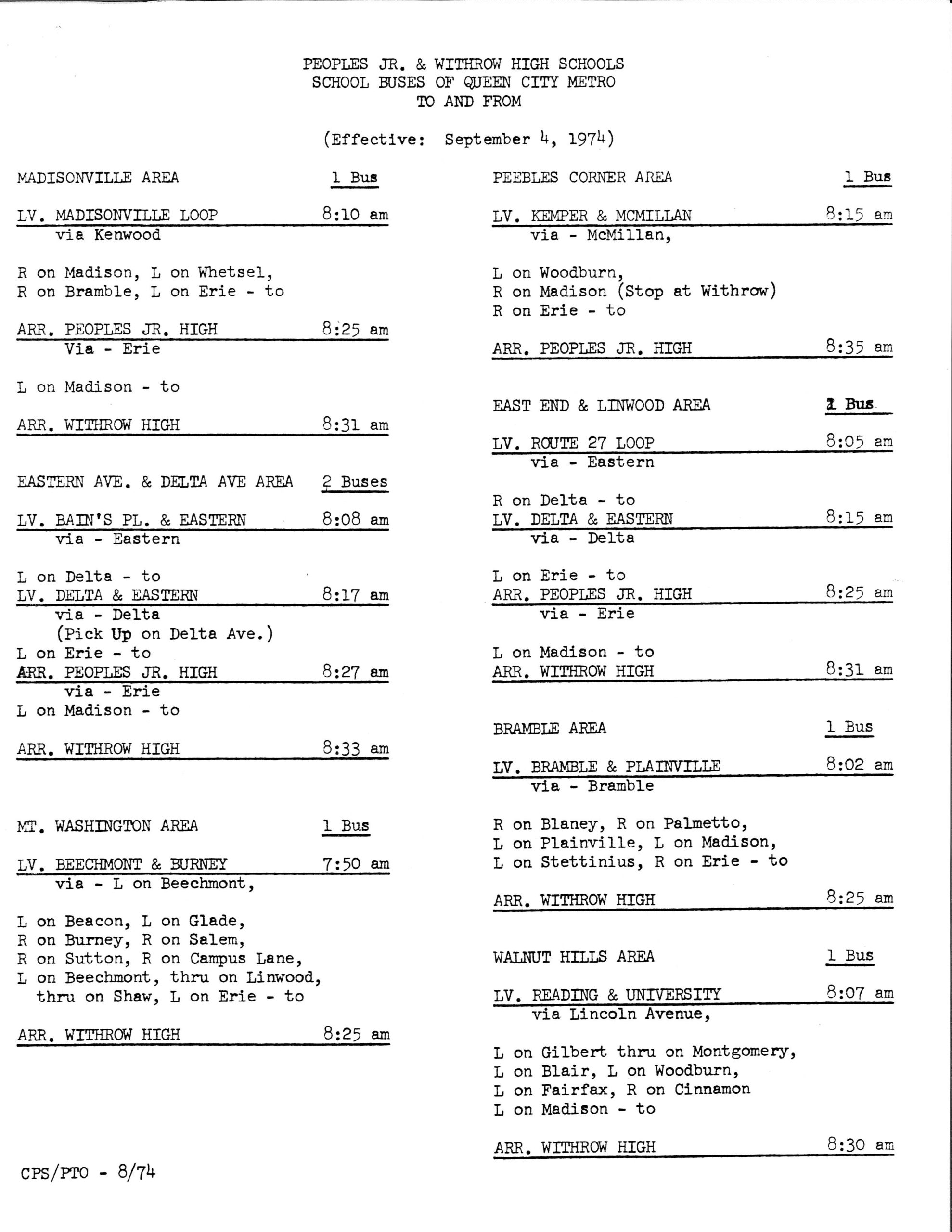Last November, the University of Cincinnati Libraries announced the award of an Archives Grant from the National Historical Publications and Records Commission to the Libraries’ Archives and Rare Books Library (ARB). This grant supports the archival processing of records related to the lawsuit Bronson v. Board of Education of the City School District of the City of Cincinnati maintained by the local branch of the National Association for the Advancement of Colored People (NAACP) and donated to the University of Cincinnati in the 1980s.

The struggle of busing
During the legal proceedings of the Bronson case, one of the examples of discrimination within Cincinnati schools cited by the NAACP was the policy of busing students to school further away rather than allowing them to attend a much closer school in order to prevent integration at particular schools.
Examples documented within the Bronson records include the deposition by former Cincinnati mayor and civil rights advocate Theodore Berry in in which he mentioned an instance where Black students were being bused to a school rather than attending he nearest school which was not overcrowded. Another example found within the collection is the deposition of George Bowers, the Ohio State Assistant Superintendent, in which he recites a complaint during the 1960s that accused Cincinnati Public Schools of busing Black students to a white segregated school but keeping the students in separate classrooms. In theory this would help with the racial balance of the school, but the school was still segregated. Meeting minutes from the Cincinnati Board of Education provided an explanation for this separation as it was intended to give the students time to adjust to the new school for up to a full year before being integrated. The complaint does not follow up if those students were eventually integrated within the classrooms.
The collection also includes board meeting minutes, exhibits, letters and notes on transportation costs, routes, mileage, contracts and general information to illustrate how busing worked in the Cincinnati Public Schools.
Desegregation plans and forced busing
There were attempts during the 1970s to desegregate schools where students would be bused to schools that were mostly of one race to achieve the school board’s goal of racial balancing.
The December 10, 1973 “Resolution Ordering the Racial and Economic Integration of Pupils in the Cincinnati Public Schools” mentions that busing would not be commonly used when it came to providing transportation for moving students to other schools, but it could become implemented as an alternative. The resolution was canceled shortly after the next board election in January 1974.

The final settlement that ended the Bronson v. Board of Education lawsuit would rely on busing to transport students to the alternative schools they wanted to attend, but these programs were voluntary. This type of busing would allow students who lived far away from an alternative program or school the opportunity to take those classes and at the same time improve integration efforts.
The collection does not detail if forced busing was eventually used to desegregate the schools in the years following Bronson v. Board of Education. The collection notes that at the time of the settlement, Cincinnati Public Schools were given less money when it came to transportation reimbursements than previously. Numerous newspaper articles document the impact it could have on the plan to desegregate via alternative programs that would rely on transportation to transport the students. Disagreements about the use of busing focused on the increased time spent of a student’s day on the bus, removing the student from their neighborhood, and eliminating the student’s freedom to choose which school to attend.
This project has been made possible in part by grant RH-104772-24 from the National Historical Publications and Records Commission (NHPRC). Any views, findings, conclusions, or recommendations expressed in this blog post do not necessarily represent those of the NHPRC.

